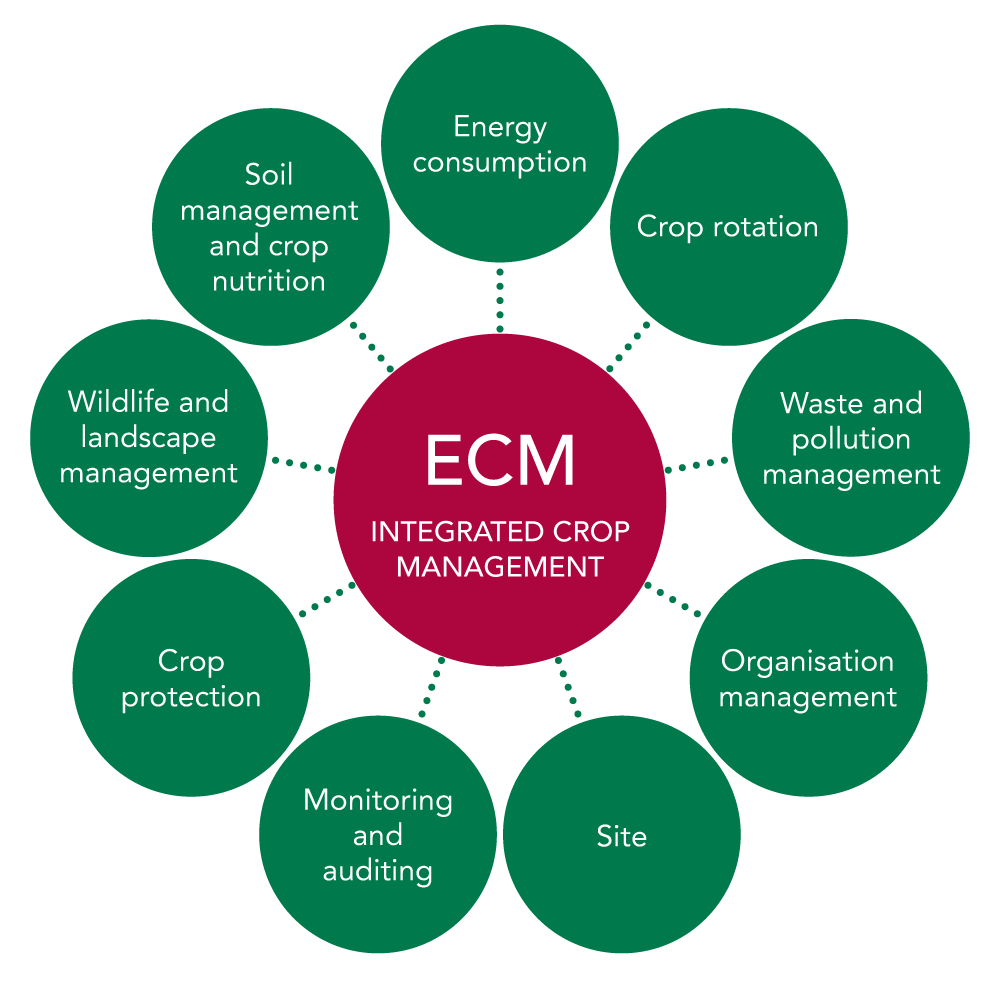Integrated Crop Management
Integrated Crop Management
Combining profitability, safe, healthy food and best environmental practice
ECM’s Integrated Crop Management System is a method of farming that balances the requirements of running a profitable business with environmental responsibility. It includes practices that avoid waste, enhance energy efficiency and minimise pollution.
By combining the best of modern technology with good farming practice, we provide a whole-farm, long-term strategy. It is not a quick fix that can be applied to one crop, or one field or one season. Although primarily concerned with crop production, livestock management is equally important on mixed farms because livestock are consumers of crops and providers of organic nutrients.

The role of ECM’s agronomists
Our agronomists have vast experience of working in partnership with farmers to assess, monitor and plan all of their activities in an integrated way that both respects biodiversity and ensures profitability. Because our system involves the whole farm and is site-specific, there are no hard and fast rules about how we achieve this. Individual farms differ in many ways: location, climate, soil type and cropping pattern, to name a few. Even so, we have established general guidelines that can help all farmers and growers take practical steps to improve their management practices. These cover everything from use of fertilisers and crop protection products to the maintenance and enhancement of landscape features and wildlife habitats.
Whatever the farm, wherever it is located, planning, taking action and monitoring outcomes are the vital processes in our system.
Why we need Integrated Crop Management
Providing an expanding population with enough to eat is a huge challenge. How we meet this challenge and at the same time respect biodiversity and take into account climate change are matters of the utmost importance.
Our Integrated Crop Management System allows farming to be practised in a way that safeguards the environment. At the same time it recognises that the quality, quantity and price of produce, the profitability of the farm and the adoption of new technologies are all essential if the overall stability of agriculture is to be preserved.